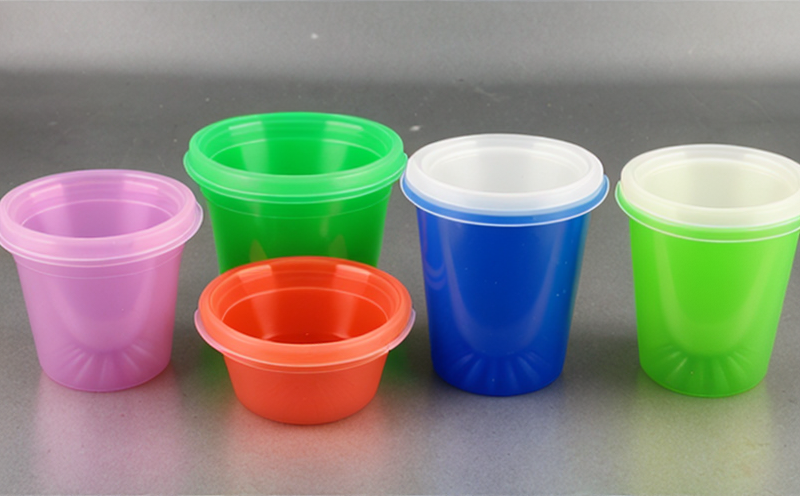ISO 10993 Cytotoxicity Testing of Disposable Plastics
The ISO 10993 series of standards provides a framework for ensuring that medical devices are safe and do not cause harm to the human body. Among its various tests, Cytotoxicity Testing is critical as it evaluates whether a material can induce cell death or damage upon direct contact with biological tissues.
In the context of disposable plastics used in healthcare settings, cytotoxicity testing ensures that these materials are safe for patient use. This service involves exposing cells to extracts from the plastic samples and observing any adverse effects on the cells over time. The goal is to identify potential risks early in product development so they can be mitigated before reaching the market.
The testing protocol follows ISO 10993-1, which outlines general requirements for the evaluation of biological compatibility of medical devices. For cytotoxicity specifically, ISO 10993-5 provides detailed guidance on how to conduct this test using either agar overlay or direct contact methods. These approaches allow us to assess both leachable substances and physical interactions between the plastic material and cell cultures.
During preparation, we carefully select appropriate cell lines that represent human tissues relevant to potential exposure scenarios. Specimens are then prepared according to standard procedures ensuring uniformity across samples. Once ready, they undergo extraction processes designed to mimic real-world conditions experienced by patients using these products. Extracts are subsequently tested for their ability to cause cellular dysfunction or death.
Our facility houses state-of-the-art equipment capable of performing these tests accurately and consistently. Our team comprises experts trained in both laboratory techniques as well as regulatory affairs, allowing us to provide comprehensive support throughout the entire process from initial consultation through final report issuance.
The results generated by this testing procedure are crucial for ensuring compliance with international regulations governing medical devices. By demonstrating non-cytotoxic properties, manufacturers can gain confidence that their products meet stringent safety standards required both domestically and internationally.
Understanding the importance of proper material selection early in design stages cannot be overstated. When done correctly, cytotoxicity testing helps prevent costly recalls later on while also protecting consumer health and safety.
Why It Matters
The safety of disposable plastics used in medical applications is paramount given their direct contact with patients' skin or mucous membranes. Even small amounts of harmful substances could potentially lead to irritation, inflammation, or worse if not properly controlled during manufacturing processes.
- Ensures compliance with global regulatory requirements like ISO 10993-5
- Provides peace of mind for manufacturers regarding product safety and liability issues
- Allows early identification of potential risks allowing for corrective actions before commercialization
- Promotes trust among healthcare providers who rely on reliable data when recommending products to their patients
- Aids in reducing waste associated with non-compliant materials by identifying problematic elements during development phases
By incorporating ISO 10993 Cytotoxicity Testing into your product development cycle, you not only enhance the overall quality of your offerings but also contribute positively to public health and welfare.
Applied Standards
The core standard used for this service is ISO 10993-5 which specifies procedures for determining whether a medical device or its component materials may be cytotoxic when in direct contact with biological tissues. Additionally, other relevant documents include:
- ISO 10993-2: General requirements for biocompatibility evaluation
- ISO DIS 10993-10: Evaluation of the potential for interaction between a medical device and body fluids
- ASTM F713: Standard guide for in vitro cytotoxicity testing of medical devices
These references provide additional context on how different aspects of biocompatibility evaluation are addressed within the broader framework of ISO 10993.
Environmental and Sustainability Contributions
- Reduces environmental impact by preventing the release of hazardous substances into natural ecosystems during end-of-life disposal or incineration
- Promotes sustainable practices through informed decision-making regarding material choices early in the design process
- Encourages recycling initiatives for compliant materials, extending their lifecycle and minimizing resource depletion
- Sustains consumer confidence by upholding rigorous safety standards, fostering long-term relationships with healthcare providers and patients alike
Through our commitment to conducting thorough cytotoxicity testing, we contribute significantly towards creating a more sustainable future for all stakeholders involved.





